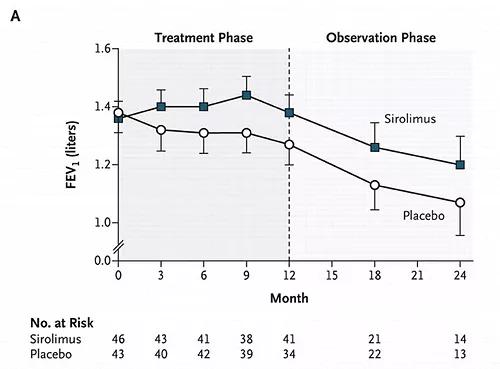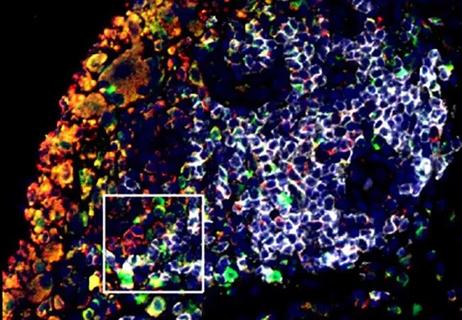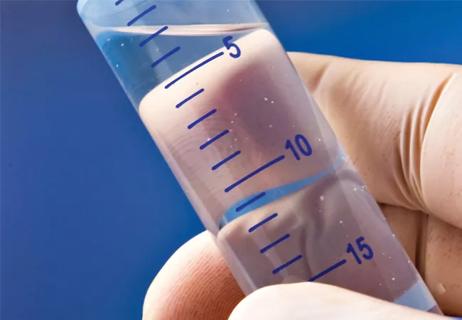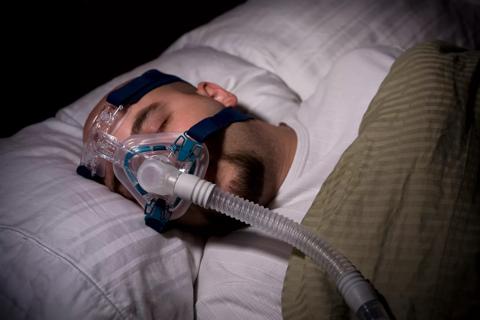Rapamycin stabilizes lung function in LAM patients

Cleveland Clinic is a non-profit academic medical center. Advertising on our site helps support our mission. We do not endorse non-Cleveland Clinic products or services. Policy
A drug originally designed to prevent organ rejection in kidney transplant patients is providing hope for a rare lung disease that almost exclusively affects women.
Rapamycin — also known as sirolimus — was approved by the Food and Drug Administration in May 2015 to treat lymphangioleiomyomatosis (LAM), a potentially fatal disease characterized by abnormal proliferation of smooth muscle cells in the lungs. Consequences of this abnormal cell growth include cystic destruction of the lungs, recurrent pneumothoraces, chylous pleural effusions and progressive respiratory impairment. Many patients also develop highly vascular, but benign, tumors of the kidneys known as angiomyolipomas that pose a risk of bleeding due to spontaneous rupture.
Before rapamycin, LAM was an untreatable disorder. Due to its predilection for women, and its potential to progress during pregnancy or with administration of estrogen through birth control pills or hormone replacement therapy, a central role of estrogen in disease pathogenesis has been postulated. Initial therapeutic interventions thus focused on lowering estrogen levels through drugs or removal of the ovaries. However, those interventions showed little benefit and are no longer recommended.
Since then, researchers have come to understand the molecular basis of the disease. The problem lies in an intracellular “switch” that controls cell proliferation. This switch is regulated by the mammalian target of rapamycin (mTOR), a molecule that, when activated, allows for unregulated proliferation of smooth muscle cells. Rapamycin, an inhibitor of mTOR initially developed as an anti-rejection drug for organ transplantation, would appear to be an ideal candidate drug for treating LAM.
Two clinical trials provided compelling evidence of the beneficial effects of rapamycin in LAM patients. The first trial demonstrated the ability of rapamycin to markedly diminish the size of renal angiomyolipomas, providing proof of concept that the drug was effective in inhibiting LAM cell proliferation.
A second, landmark trial – the Multicenter International Lymphangioleiomyomatosis Efficacy and Safety of Sirolimus (MILES) trial – examined the effect of rapamycin on lung function in LAM patients with moderate to severe pulmonary impairment, defined as an FEV1 at or below 70 percent predicted. Eighty nine patients were randomized to receive either rapamycin or placebo. After one year, lung function remained stable in the treatment group, while the placebo group demonstrated decline.

Data from the MILES trial showing the change in FEV1 over time for the sirolimus vs. placebo groups. At the end of the first year, patients receiving sirolimus maintained better lung function than those receiving placebo. During the second year, sirolimus was discontinued and the beneficial effects of the drug on lung function were lost. (McCormack FX et al. N Engl J Med 2011;364:1595-1606)
During a second year of the study, the drug was discontinued in the treatment group, leading to decline in lung function that paralleled that of the placebo group and confirming that the beneficial effects of treatment persisted only as long as the drug was administered. Notably, rapamycin was well-tolerated and the frequency of serious adverse events did not differ between treatment and placebo groups. The results of the MILES study were published in the April 2011 issue of The New England Journal of Medicine.
Although the MILES trial convincingly demonstrated that rapamcyin stabilized lung function in LAM patients, it was FDA approved only for organ transplantation. This created a barrier for some women as their insurance companies denied reimbursement for off-label use in LAM.
The LAM Foundation, in conjunction with Pfizer, appealed to the FDA, based on the compelling data and the challenges of performing additional studies given the rarity of the disease. As a direct result of the Orphan Drug Act that allows for granting special status to drugs that treat rare diseases, rapamycin received orphan designation and FDA approval in May 2015.
While the drug is considered safe, it does have nuisance side effects including mouth ulcers, lower extremity edema and hyperlipidemia. Despite its potential immunosuppressive properties, there is no evidence to date for an increased risk of infection when administered to LAM patients. Notably, as an antiproliferative medication, it also inhibits wound healing. Because of this, it must be held prior to surgery and not resumed until healing is complete.
The success of the MILES trial, which included only women with impaired lung function, paved the way for an upcoming trial that will examine the safety and efficacy of low dose rapamycin in women in the early stages of LAM, with the goal of preventing subsequent decline in lung function. This multicenter trial has not started, but the Cleveland Clinic again will be a participating center.
LAM Clinics are located at 30 medical centers across the country and provide a multidisciplinary team of clinicians with expertise in the evaluation of patients with suspected LAM and in the care of those with confirmed disease. Robert Kotloff, MD, Chairman of the Department of Pulmonary Medicine, and Joseph Parambil, MD, in the Department of Pulmonary, Allergy and Critical Care Medicine, are the LAM Clinic Co-directors at Cleveland Clinic.
The LAM Foundation has now partnered with other rare lung disease advocacy groups and foundations to expand the role of LAM Clinics to provide care for a whole spectrum of rare and orphan lung diseases. This will not only provide the necessary expertise but will facilitate performance of clinical trials similar to what was accomplished with the MILES trial. It is hoped that the recent successes achieved in the treatment of LAM will serve as a model for drug development for other rare lung diseases.

Nintedanib significantly reduces loss of lung function

Three clinical trials testing old and new drugs

Only for patients at high risk of severe exacerbations

A rationale for future optimism

A review of conservative, pressure-based and surgical treatments for OSA

A review of IDSA and NIH guidelines

Volatile organic compounds have potential in heart failure diagnostics

Caregivers are provided with real-time bronchoscopy patient findings